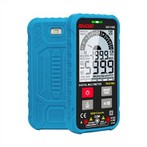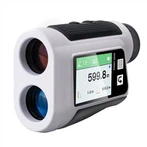Summary of key points of electric soldering iron welding technology
Electric soldering iron is an essential tool for electronic production and electrical maintenance, mainly used for welding components and wires. It can be divided into internal heating electric soldering iron and external heating electric soldering iron according to mechanical structure. According to function, it can be divided into non suction soldering iron and suction soldering iron. According to different uses, it can be further divided into high-power soldering iron and low-power soldering iron. This article mainly introduces the correct 5-step welding method of electric soldering iron and summarizes the key points of electric soldering iron welding technology.
The correct welding steps for electric soldering iron
Welding technology, as a fundamental skill, plays a crucial role in electronic manufacturing. When using an electric soldering iron for manual soldering, it is necessary to master certain skills, which are actually included in the 10 key points of soldering.
1. A scratch
Scraping refers to the cleaning of the surface of the welded metal object before welding. A small knife, scrap steel saw blade, etc. can be used to scrape off (or use fine sandpaper or coarse rubber to wipe off) the oxide layer, oil stains, or insulation paint on the welding surface until a new metal surface is exposed. Before soldering a self-made printed circuit board, it is also necessary to carefully polish one side of the copper foil with fine sandpaper or water sandpaper. Scraping is a crucial step in ensuring welding quality, but it is often overlooked by beginners. If the scraping is not done properly, it will result in poor tin plating and welding. It should be noted that some component leads have already been silver plated, gold plated, or tinned. As long as there is no oxidation or peeling, there is no need to scratch them again. If there is dirt on the surface, it can be wiped with a coarse rubber as shown in Figure 3 (c). The choice of thick eraser is best when using a large eraser for drawing. Some gold-plated crystal transistor pins and leads may find it difficult to tin after scraping off the coating. Regardless of the form of scraping used, it is important to continuously rotate the pins of the component and ensure that the entire circumference of the pins is cleaned thoroughly.
2. Secondary plating
Plating is the process of tinning according to the area to be welded. After scraping off the pins, wire heads, and other welding parts of the components, an appropriate amount of solder should be immediately applied, and a thin layer of tin should be plated with an electric soldering iron to prevent surface re oxidation and improve the solderability of the components. The plated solder layer should be thin and uniform, so the amount of solder on the soldering iron head should not be too much each time. For components such as crystal diodes and transistors that are afraid of overheating, it is necessary to first clamp the root of the lead pin with tweezers or pointed pliers as shown in Figure 4 (b) to help dissipate heat, and then perform tin plating treatment. Tin coating of electronic components is an important process step in welding technology to prevent hidden dangers such as false soldering and false soldering, and must not be careless.






